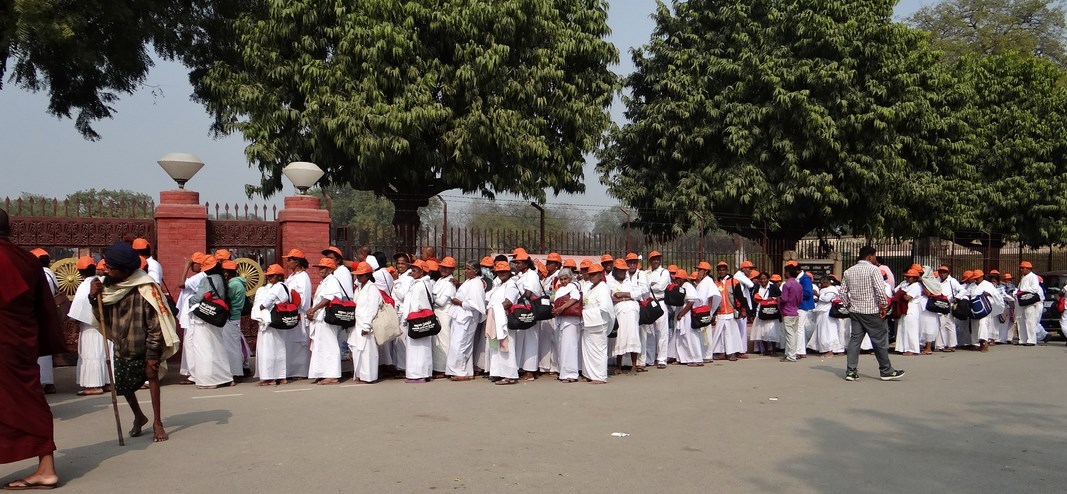
Long lines awaited our little group of 16 as we came to see a Buddhist ruin.
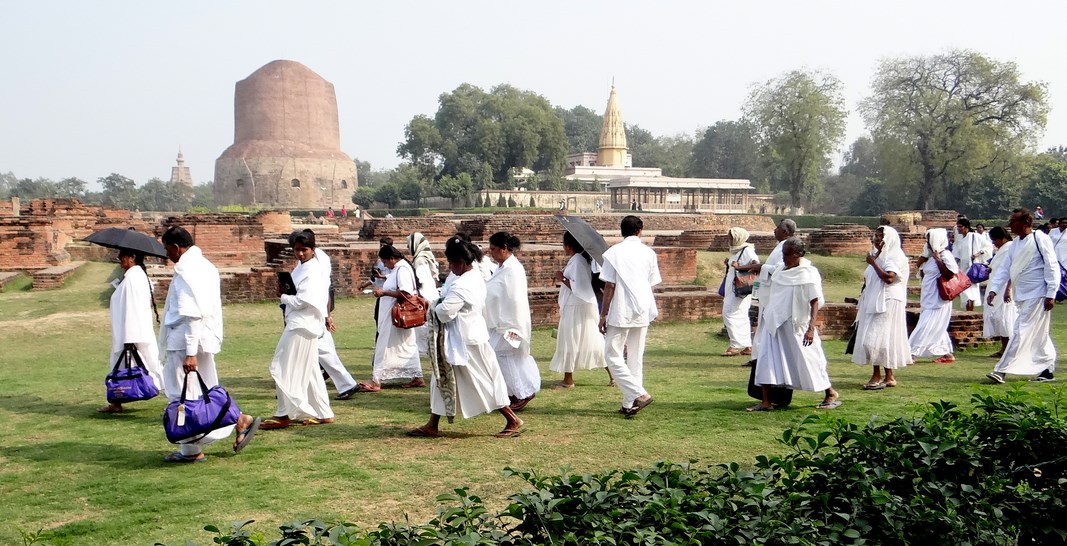
The Dharmarajika Stupa dominates the scene. Stupas were built to hold relics of Lord Buddha. King Ashoke The Great built it in the 3rd century B.C., one of seven. This is the only one to survive.

Inside the stupa, a green marble casket was found. Inside of it was a stone box. No one knows what the box held, but it is now in a Calcutta Museum. The casket was thrown in the River Ganges.

Layers of brick were laid over the old brick to enlarge the stupa. A set of stairs was built from four directions, meeting at the top so the guardians could climb up and enter the stupa. The stair structure was torn down by order of King Banaras in 1794 A.D. to use as building materials.
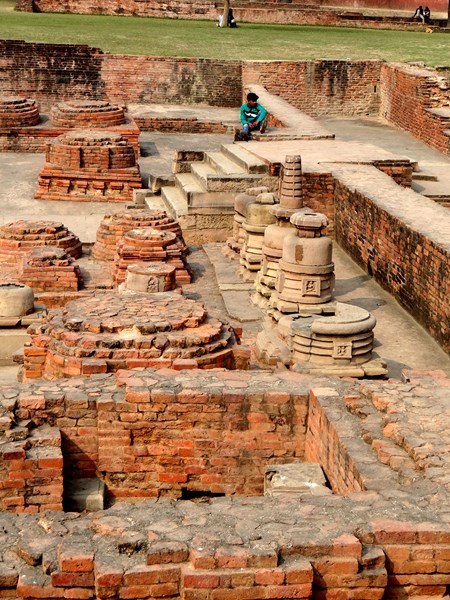
In time, the same fate applied to the rest of the buildings on the site.

Today, a wide path around the stupa is used by the faithful to walk around clockwise, then counterclockwise. They still place flowers near or on the stupa. Signs encourage them not to place flowers, but they persist. Hugo and Kris made friends with a charming little boy on their walk around the stupa.
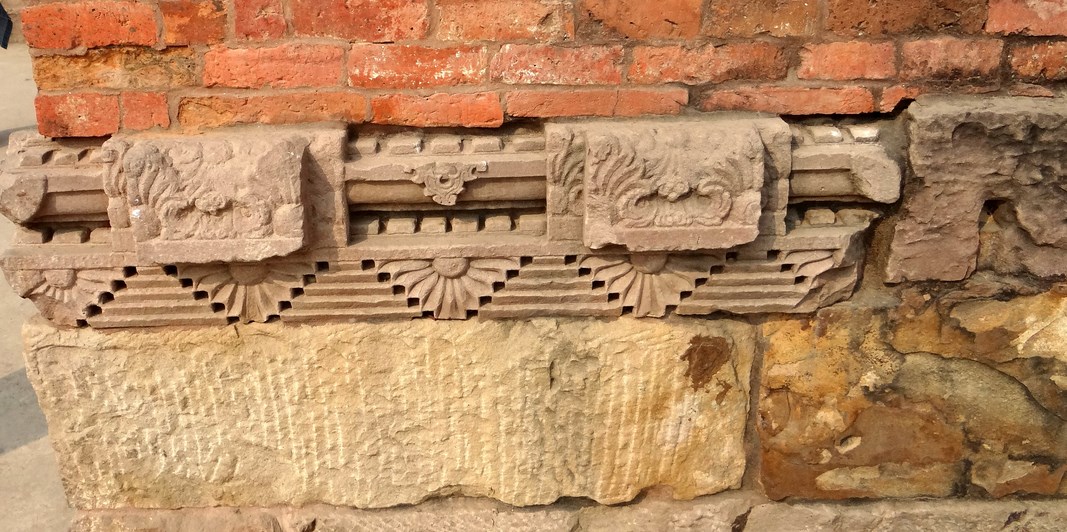
Archeologists dug up the ruins and discovered beautiful carvings on the faces of some of the brick work.

Buddha is carved in the circle on the right.
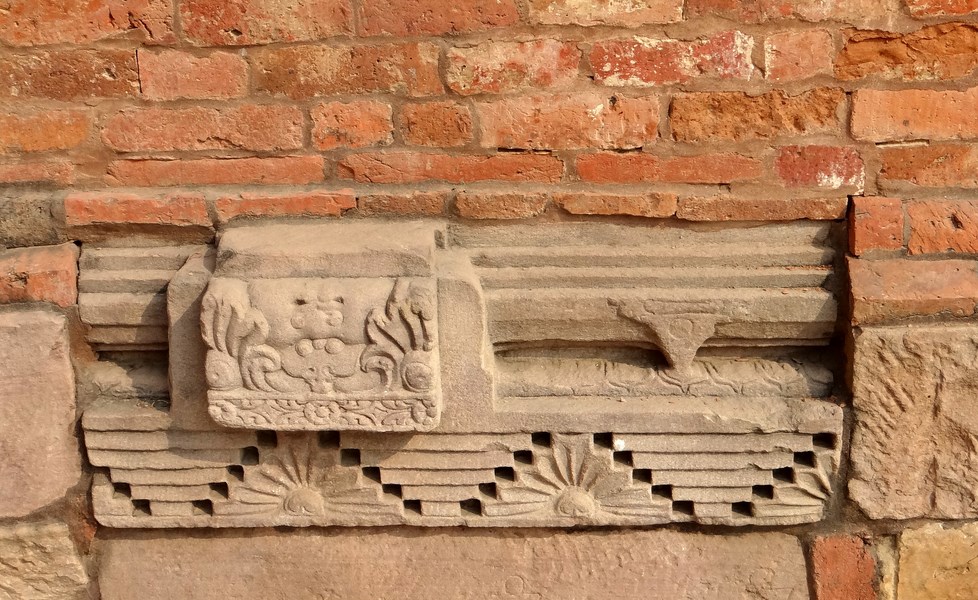
These little beauties survived in decent shape for over 2,000 years. Pretty amazing.
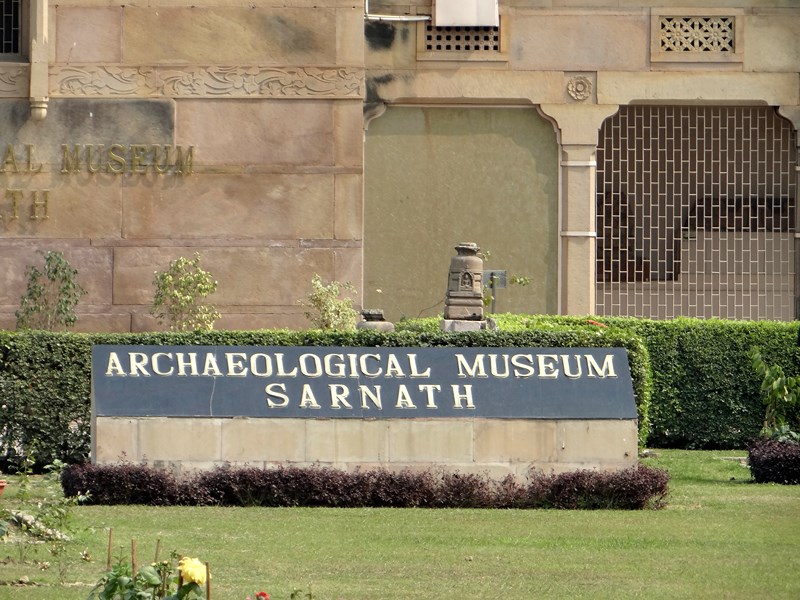
Before visiting the Stupa, we spent two hours at Museum Sarnath where artifacts from the stupa site are housed, along with a photo section showing some of archeology work and a history of Buddha. The beautiful and very special Buddha housed here has disappeared from my photo album. Due to human error. Human, that's me, I'm sad to say. Who can understand electronics? That's my excuse.
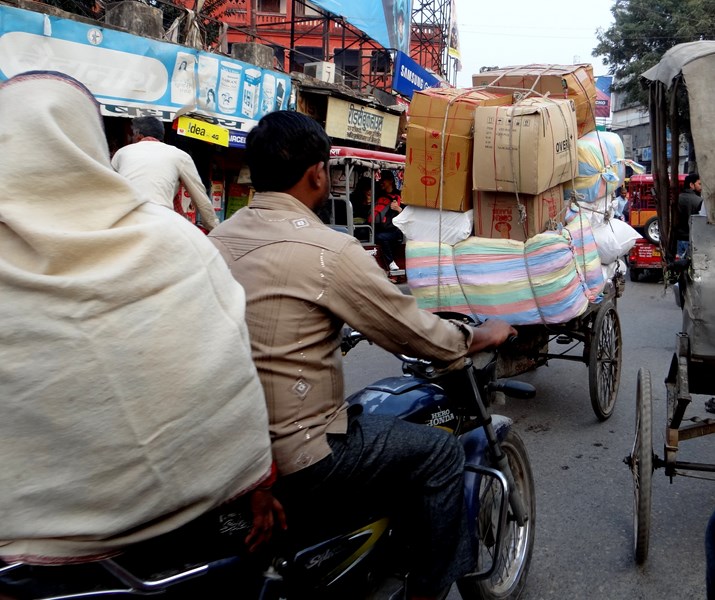
We packed into electric rickshaws and headed for the River Ganges to watch the ceremony at sunset. As you can see the streets are crowded.

The rickshaws are also limited in how close they can get to the river. Our guide, takes us through a short cut, that I mistakenly blogged as happening on yesterday's trip to the river.

The short cut was a crush. You could hardly take a picture for being jostled.

Street cooks were making dinner.

A be sure to miss event for such as we.
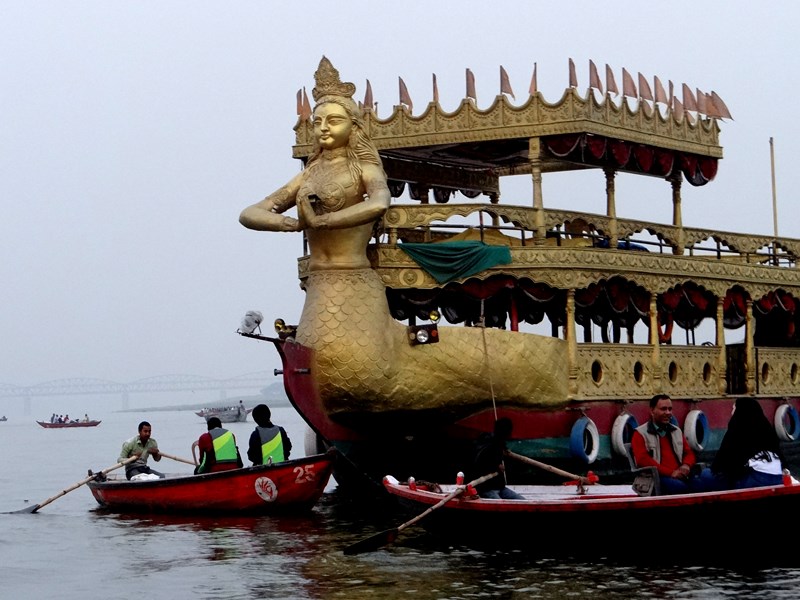
We again load into boats. This beautiful tourist boat sits high above the water, but it was not for us.
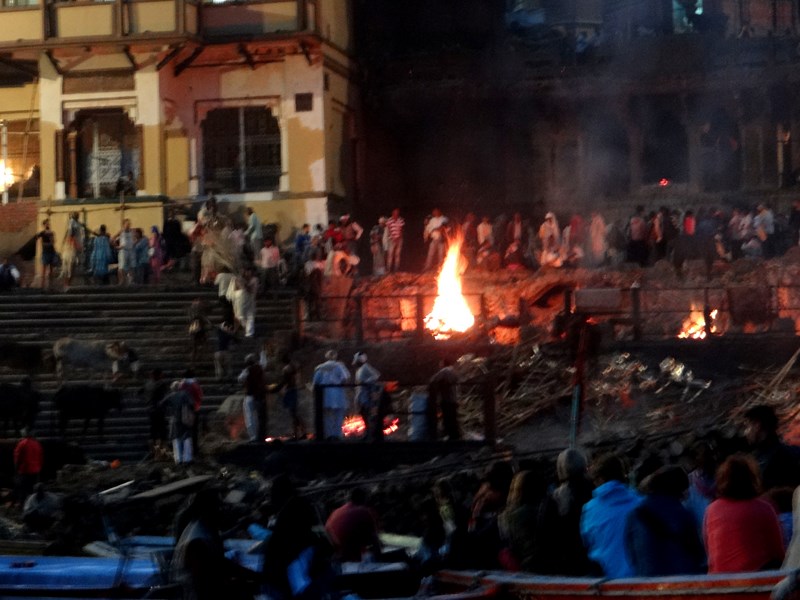
As the sun went down, we could see the fires on shore. I couldn't see my camera settings well enough to set it for flash. Flash can only reach about 20 feet or less, but it would have helped.

Our guide explains the candles tradition. You send them off with a prayer for yourself, or a loved one who has died.

We silently make our prayer.

Then set them afloat in the sacred water.

A beautiful view from our boat.

As we get closer to shore, we can see the priests and people celebrating in what is their special ritual.
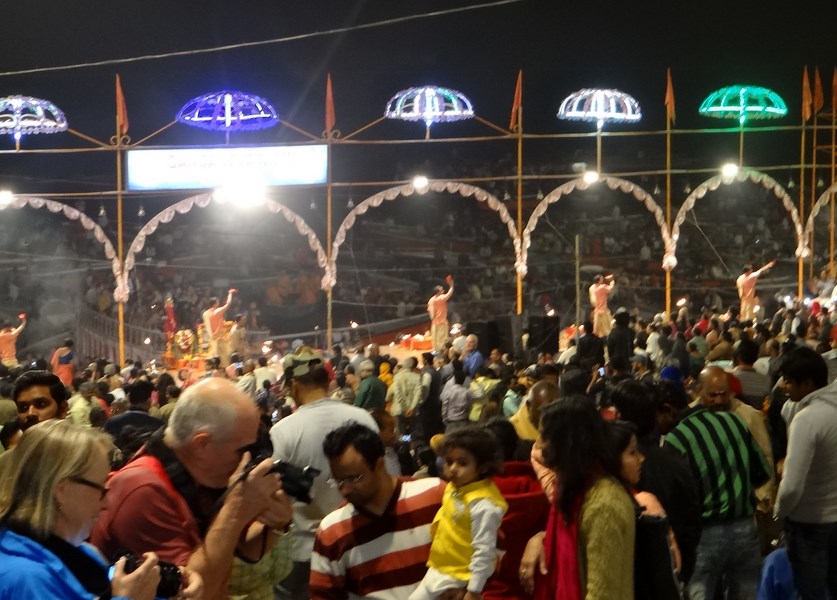
As we climb the stairs on our way out, we find other tourists like us taking pictures of the crowd. The priests, with the help of their apprentices, offer prayers, light the candles with flowers then ring great bells. Someone from our group once commented, "...its their religion, kind of a shame that this has become a tourist attraction."
But, as Ranvir told us, this goes on every day, every night. 365 days a year. It is a never-ending ritual, celebrating dying. With the hope to be reincarnated on a higher plain, a new life.
No comments:
Post a Comment